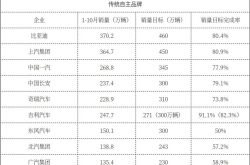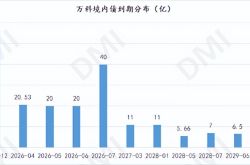Behind Alibaba's ToC Strategy, QianWen, ChatGPT, ByteDance's Doubao, and Tencent's Yuanbao Compete for Intent Entry Points
![]() 11/21 2025
11/21 2025
![]() 352
352

Produced by | He Xi
Layout by | Ye Yuan
Recently, Alibaba officially launched the public beta of its personal AI assistant app, 'QianWen.' This marks a comprehensive shift in Alibaba's AI strategy—from being a B-end infrastructure provider in the past to becoming a 'direct connector' to C-end users.
With products like ChatGPT, ByteDance's Doubao, and Tencent's Yuanbao already established in this track (translated as 'track' or 'field'), why is Alibaba launching QianWen? What does Alibaba see? And why is QianWen tasked with leading Alibaba's AI-to-C efforts?
Let's take a closer look.
01
Full-Scale AI-to-C: What Does Alibaba See?
Alibaba's foray into the C-end market is no impulsive move but stems from a profound insight into global AI market trends and a strategic judgment about future super entry points.
Currently, the global AI application market is experiencing explosive growth. By 2025, ChatGPT's monthly active users (MAUs) will surpass 620 million, exceeding the 520 million MAUs of social media platform X. Comprehensive data shows that global AI application MAUs are nearing 1.6 billion, forming an unprecedentedly vast market.
Moreover, McKinsey predicts that by 2030, the global AI-to-C market will reach $1.3 trillion, with an average annual growth rate exceeding 35%. Faced with a trillion-dollar market, no tech giant can afford to ignore it.
More notably, user habits are changing. Recent surveys show that 29% of parents use AI daily, nearly double the rate of non-parents. AI has evolved from a toy for tech enthusiasts into a tool for ordinary people to solve practical problems.
Domestically, the C-end AI market in 2025 has undergone profound changes. From the initial 'hundred-model battle' to the current 'top five foundational models,' the market landscape has begun to take shape. As of June 2025, China's generative AI user base has reached 515 million, with a penetration rate soaring to 36.5%, and user growth of 266 million in just six months.
With the domestic AI market landscape largely established, industry competition has shifted from mere technical parameters to ecological integration and scenario implementation.
Recently, many users have noticed that when consulting AI assistants like Doubao, Kimi, and Yuanbao about consumption-related issues, their responses now include product links. Clicking these links allows users to jump directly to e-commerce platforms to complete purchases.
This 'link insertion' trend has occurred almost simultaneously. ByteDance's Doubao has directly embedded Douyin Mall links. When users inquire about product recommendations, Doubao generates a list of products with prices and applicable scenarios. Tests show that when asked, 'How to choose a hydrating facial mask?' Doubao provides suggestions based on ingredients, efficacy, and skin type, ending with five illustrated products complete with links for selection.
Kimi also supports product link recommendations but requires an intermediate page like 'SMZDM' before redirecting to Taobao or JD. Tencent's Yuanbao has undergone strategic adjustments, piloting JD redirection in August but removing external links by late September, now only supporting WeChat ecosystem stores.
This trend echoes overseas developments. OpenAI introduced a shopping feature in ChatGPT in April this year and launched an 'instant checkout' service in September, allowing users to complete payments for Etsy and Shopify products directly within the chat without redirecting to third-party pages.
The impact of AI-driven 'link insertion' for e-commerce is evident.
First, traffic entry points are being directly diverted by AI. The most direct effect is that users' purchasing decision-making starting points are changing. Previously, shopping began with opening Taobao or JD to search; now, users might first ask Doubao, 'What skincare products are good for autumn and winter?' If AI provides answers with purchase links, traditional e-commerce search entry points will naturally be diverted and weakened.
Second, ecological barriers and data risks. Product links from major AI models generally prioritize their own ecosystems. This means shopping via Doubao ultimately redirects to Douyin Mall, while using Tencent's Yuanbao leans toward WeChat Stores. This ecological closure may 'bypass' Alibaba's Taobao and Tmall systems, posing potential risks of traffic isolation. Third, AI is a natural testing ground for reconstructing e-commerce. Failing to act means being left behind by competitors.
In short, AI-driven 'link insertion' for e-commerce is merely a surface phenomenon; its essence is a battle for future super entry points.
For Alibaba, this is a war it cannot afford to lose. It needs to successfully channel its vast e-commerce ecosystem advantages through a native 'super entry point,' enabling users to complete everything 'with a few words.'
This, perhaps, is why Alibaba is launching QianWen despite existing products like ChatGPT, ByteDance's Doubao, and Tencent's Yuanbao already established in the C-end track (translated as 'track' or 'field').
02
Why Is QianWen Tasked with Leading Alibaba's AI-to-C Efforts?
Having discussed why Alibaba is strongly promoting QianWen, let's now explore why QianWen is tasked with leading Alibaba's AI-to-C efforts.
In the author's view, Alibaba chose QianWen as its AI-to-C flagship for two main reasons: first, its underlying large model, Qwen, boasts strong technical capabilities, open-source influence, and user reputation; second, as Alibaba's foundational business support, Qwen holds exceptional value for ecological synergy within Alibaba's ecosystem.
In terms of capabilities, the Qwen series has evolved over several years into a full-modality, full-scale model system covering text, code, images, voice, and video. Public data shows that as of 2025, Qwen's open-source models have surpassed 600 million downloads globally, with over 170,000 derivative models, consistently ranking first on mainstream platforms like Hugging Face, becoming the de facto 'world's top open-source model.'
In April 2025, Alibaba's open-source next-generation Qwen3 model outperformed global leaders like DeepSeek-R1 and OpenAI-o1 across multiple benchmarks.
Stanford University's 2025 AI Index Report noted that the performance gap between top Chinese and U.S. AI large models has narrowed to 0.3%, nearly erased. Among them, Alibaba's Qwen ranked third globally in terms of model contribution.
Over the past few years, Qwen has won global developers' trust and technical support through its open-source strategy, building a robust developer ecosystem. Global enterprises, research institutions, and even Silicon Valley giants like Airbnb, NVIDIA, and Apple deeply rely on Qwen. NVIDIA CEO Jensen Huang publicly stated that Qwen dominates the global open-source model market. Airbnb CEO Brian Chesky straightforward words (translated as 'said bluntly') that they 'heavily rely on Qwen' because it is 'faster and better than OpenAI's models.'
As Alibaba's foundational business support, Qwen's synergistic value for Alibaba's ecosystem is evident in every aspect, from technical foundations to user experiences.
Before Qwen, Alibaba's various business lines might have sought external tech suppliers or developed inconsistent small models, leading to high costs and fragmented experiences. Now, from Taobao's 'Taobao Ask' to DingTalk's 'DingTalk Todo,' and Alibaba Health's AI consultations, Qwen drives them all. This ensures users experience a unified cognitive style and similar capability levels across different scenarios.
Moreover, through open-source and internal services, Qwen enables business units without top AI teams (like Xianyu and Youku) to leverage world-leading model capabilities with a single click, significantly lowering the threshold and cycle for AI innovation across the group.
When business data from Taobao, Amap, and Fliggy interact with and tune the same 'Qwen Brain,' this brain gradually learns Alibaba's ecosystem 'language' and 'business logic.' A Qwen trained on Taobao for 'product recommendations' can transfer its understanding to Ele.me's 'dining recommendations.'
But it doesn't stop there. Alibaba's ecosystem generates massive, diverse, and high-quality real-time data daily: billions of commodity transactions, millions of travel navigations, and hundreds of millions of local life orders. This 'live combat data,' coveted by other companies, is the 'top fuel' for training more powerful AI.
Qwen's integration with these businesses is like connecting to an ever-running evolutionary engine: optimizing recommendations on Taobao, processing meetings on DingTalk, planning routes on Amap—every real-world application scenario feeds back into Qwen, making it smarter, more business-savvy, and more user-understanding. This 'data flywheel' is Qwen and Alibaba's most robust moat in AI competition.
In short, Qwen breaks down data silos within Alibaba's ecosystem, creating a 'one brain, serving all domains' synergistic effect, making Alibaba's products more 'in sync.'
Overall, QianWen's synergistic value for Alibaba's ecosystem is immense and far-reaching. It is not just an ecological 'connector,' enhancing user experiences through integrated services; it is also an ecological 'value enhancer,' making each business segment more competitive through intelligence.
Through a tripartite layout of technical flywheel, ecological synergy, and strategic positioning, Alibaba aims to align its technical strength, ecological scale, and user entry points into a cohesive force. Its ultimate goal: enabling users to mobilize the entire Alibaba ecosystem through QianWen as a single entry point, powered by the unified Qwen brain.
This is why QianWen is Alibaba's AI-to-C flagship.
03
The Value of QianWen's ToC Strategy Extends Beyond Traffic Entry Points
Having discussed why Alibaba launched QianWen and why it leads Alibaba's AI-to-C efforts, let's now explore the value of C-end AI large models—far beyond being mere super traffic entry points. This is where QianWen's AI-to-C strategy holds even greater future value.
First, it's essential to clarify that AI as a traffic entry point fundamentally differs from traditional social media or short-video platforms. Social media like WeChat builds relationship networks with 1.3 billion users, while Douyin creates content ecosystems with 800 million daily active users. Their core is occupying user time and attention.
In contrast, AI entry points represent a more efficient model—intent entry points that directly understand user needs and provide solutions.
Consider these figures: ChatGPT has approximately 700 million weekly active users, generating around 75.6 million product-related dialogues weekly, equivalent to a super marketplace receiving nearly 4 billion product inquiries annually.
AI entry points are refactor (translated as 'restructuring') traffic allocation patterns. The traditional search box model is being replaced. This March, AI search monthly active users surpassed 600 million, becoming one of the four major AI application scenarios with over 100 million users.
As intent entry points, AI's commercial value far exceeds traditional traffic entry points.
In AI dialogues, user intent is explicit, immediate, and actionable. When a user asks, 'Help me find a skincare product for oily skin,' their commercial intent is far clearer than when aimlessly browsing a short-video platform.
A definite trend is emerging: C-end AI large models will not only insert links for e-commerce but also distribute services for commissions. For example, AI can directly call Ctrip to book hotels or Meituan to order food, earning commissions. AI can also directly access mini-programs to sell services, effectively combining traditional search engine and app store functions into a single dialogue.
Specifically for QianWen, by integrating services like Taobao, Amap, Ele.me, Fliggy, and DingTalk, it can directly convert users' purchasing, travel, and office intentions into actions and results. Currently, QianWen's synergy with Amap, Taobao, Alipay, and Flash Purchase is underway, with major updates expected soon. This 'one entry, full-domain synergy' experience is a moat that pure model companies cannot easily replicate.
If this path succeeds, QianWen will not merely be a new app within Alibaba's ecosystem but become an intelligent hub mobilizing all ecological resources and responding to all user needs, redefining human-computer interaction and commercial conversion models.
In summary, Alibaba's launch of QianWen demonstrates strategic vision beyond competing for traffic entry points in a red ocean; it aims straight for the core of the next era—intent entry points.
The value of QianWen's ToC strategy extends further.
Currently, AI large model vendors are not only inserting links for e-commerce and selling services in dialogues but also deeply integrating social and entertainment functions to create deeper connections.
Data shows that over 80% of young users leverage AI to build genuine interpersonal relationships. AI provides a pressure-free, non-judgmental space that fills emotional voids in fast-paced, high-stress societies, satisfying deep-seated human needs for companionship, recognition, and low-burden socializing. For example, innovative models like 'co-parenting' socializing. On some AI social platforms, two real users must jointly raise an AI pet. Neither can complete feeding, cleaning, or interacting alone, forcing continuous communication and collaborative decision-making, naturally deepening mutual understanding and emotional bonds.
In other words, AI is no longer an isolated product but evolving into a new type of social infrastructure deeply embedded in young people's relationship networks.
In entertainment, AI is pushing entertainment from a 'passive consumption' era to a new epoch of 'active creation and immersive experiences.' Platforms like Replika (international) and Glow (domestic) provide emotional support and companionship through deep, personalized dialogues, satisfying users' needs for expression and recognition. Domestically, ByteDance's 'Li Weike' and Alibaba's 'Lili' virtual humans not only perform content but also interact with fans in real-time via AI, forming tighter fan communities.
Looking ahead, AI large models will no longer be merely tools that users actively open but will seamlessly integrate into users' social and entertainment lives, becoming active participants, the most understanding recommenders, and even trustworthy companions.
This is the future value and direction that QianWen's ToC strategy must strive toward.








